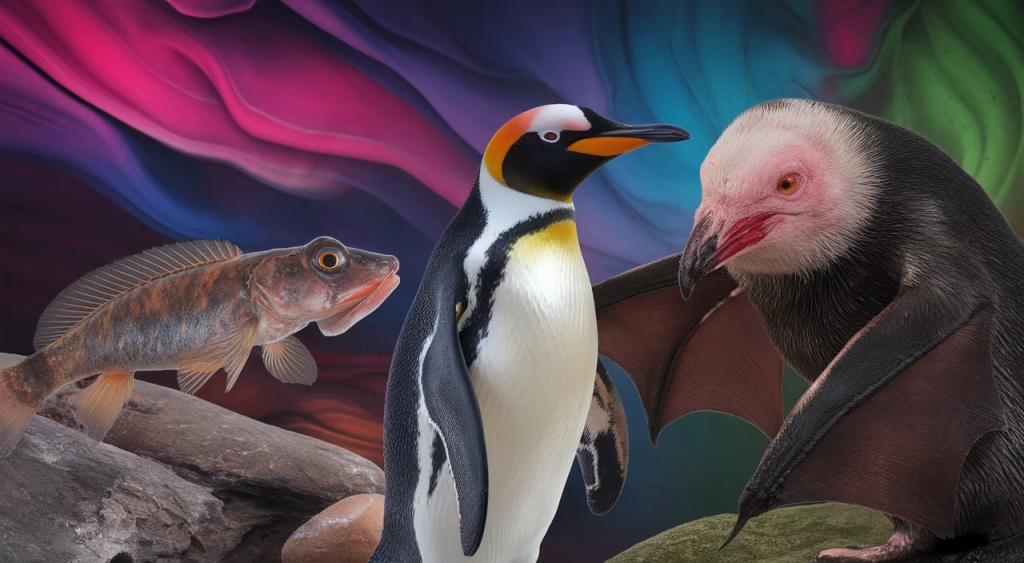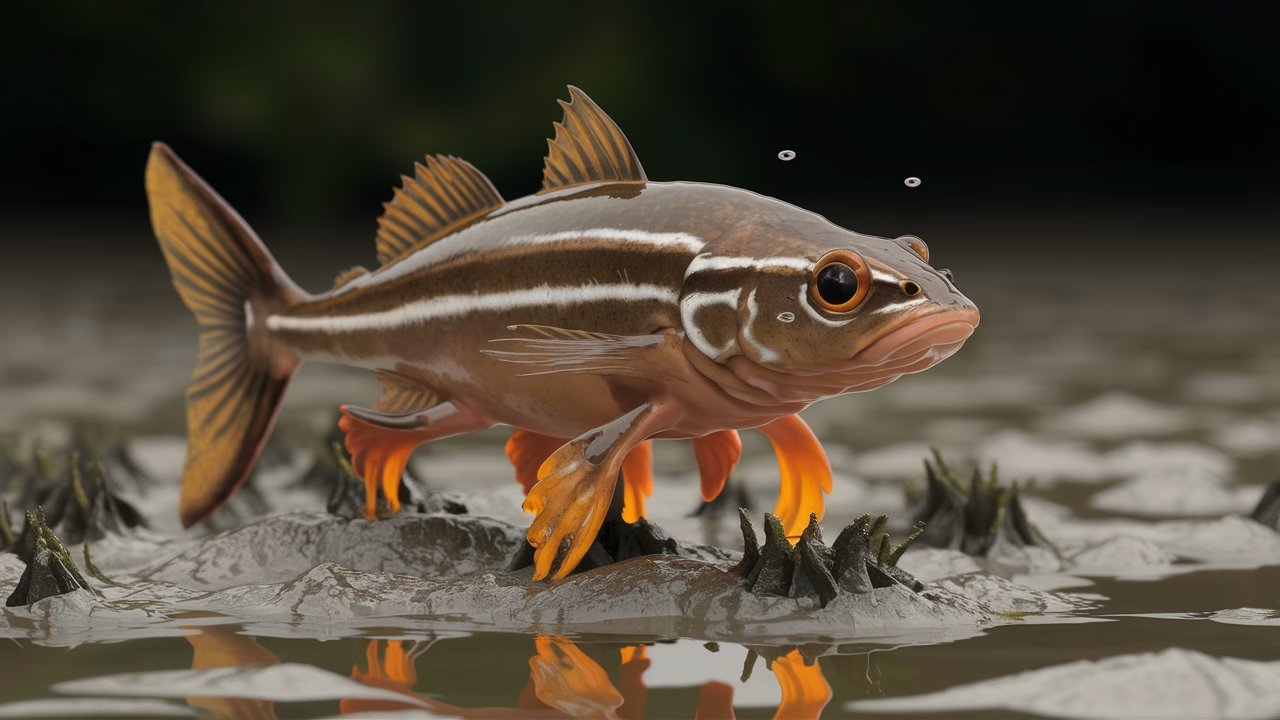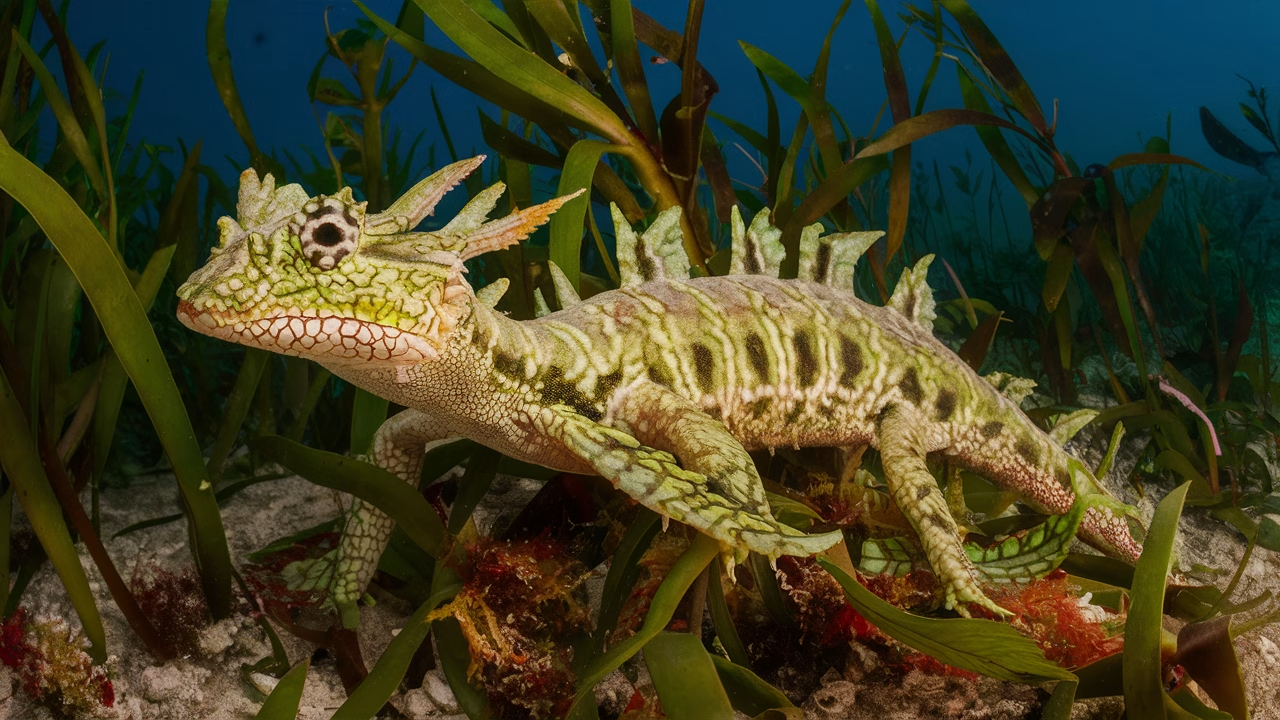Which animals defy their own species’ rules—and why do they do it?
Nature doesn’t play by one simple rulebook. Some animals blur the lines between groups—fish that walk, birds that swim, and mammals that look like a science experiment gone wild. But why? These evolutionary outliers aren’t mistakes—they’re marvels, perfectly adapted to strange niches. Let’s explore what makes these animals so oddly fascinating and uncover the amazing wildlife secrets revealed through their bizarre animal facts that will blow your mind.
TL;DR:
- Mudskippers are fish that spend most of their lives on land, using ‘arms’ to walk and breathe air through their moist skin.
- Penguins: Birds that lost the ability to fly—but gained incredible underwater agility, becoming some of the best swimmers in the animal kingdom.
- Vampire bats: Blood-drinking mammals that are surprisingly social, empathetic, and even altruistic among their colonies.
- Sea pigs: Deep-sea dwellers that look like translucent underwater pigs, feeding off nutrients in ocean-floor mud.
- Blobfish: Misunderstood deep-ocean residents that only appear gelatinous and sad when removed from their pressurized environments.
- Octopuses: Shape-shifting, color-changing, camouflage experts with astonishing intelligence and flexibility.
- Star-nosed moles: Blind burrowers with the most sensitive touch organ in the animal kingdom.
- Platypus: A mammal that lays eggs, has venomous spurs, and a duck bill—all rolled into one furry package.
- Leafy seadragon: Seahorse relatives that perfectly mimic pieces of drifting seaweed.
- Lemurs (Aye-aye): Nocturnal primates with eerie fingers used to locate grubs deep within trees using echolocation-like tapping.
Mudskipper: The Arm-Walking Fish with an Identity Crisis
If ever a fish needed therapy, it’d be the mudskipper. Found in mangroves and intertidal zones across Africa and Asia, these amphibious oddballs live their lives hopping across the mud like frogs. While technically fish, mudskippers display unique animal behaviors in the wild by breathing through their skin and the lining of their mouth—much like amphibians—and only occasionally return to water. Their pectoral fins function like limbs, supporting their weight as they ‘walk’ on land. They even have eyes that protrude on top of their heads, giving them a periscope-like view to scan for predators and mates above the mud.
What does that mean for you? If you’re studying evolution or just intrigued by nature’s curveballs, mudskippers offer insight into how species can straddle two worlds—literally. These bizarre animal facts that will blow your mind showcase evolution’s creativity in action.
Penguin: Birds That Chose to ‘Fly’ Through Water
Penguins are basically birds that went rogue. Rather than take to the skies, they turned their wings into high-powered flippers. Penguins have dense, stone-like bones that counteract buoyancy, helping them shoot through the water like torpedoes. On land, they may waddle awkwardly, but underwater, they’re marvels of streamlined motion—revealing amazing wildlife secrets about adaptation.
Why did this happen? Penguins evolved in predator-free niches in the Southern Hemisphere, giving them the evolutionary space to prioritize aquatic skill over flight. It’s a testament to nature’s flexibility when adapting to the environment, showcasing unique animal behaviors in the wild.
Vampire Bat: Surprisingly Generous Blood-Drinker
With a name like ‘vampire bat,’ you’d imagine something terrifying. But these small mammals, especially the common vampire bat (Desmodus rotundus), are shockingly social. They form tight-knit communities and display altruism rarely seen in other animals. Bats unable to find food are often fed by their neighbors through blood-sharing regurgitations. They even groom each other and adopt orphans from deceased mothers!
So yes—they drink blood. But socially? They’re the therapists of the mammal world, revealing amazing wildlife secrets about cooperation and empathy that represent some of the most bizarre animal facts that will blow your mind.
Sea Pig: The Porcine Creature of the Abyss
The sea pig (Scotoplanes) is neither pig nor typical sea cucumber. These bizarre, translucent creatures roam the dark, cold abyss of deep ocean floors in herds. They extract nutrients from seafloor muck using tube-like legs and inflated bodies. Their gelatinous structures exaggerate any environmental pressure changes—so don’t expect them to vibe outside their 1000m-deep zone. These unique animal behaviors in the wild demonstrate how life adapts to even the most extreme environments.
| Feature | Mudskipper | Sea Pig |
|---|---|---|
| Lives on land? | Yes (intertidal) | No (deep-sea) |
| Movement | Arms/Fins | Tube feet |
| Respiration | Skin + gill chamber | Osmosis (respiration unknown) |
Leafy Seadragon: The Marine Oscar-Winner for Camouflage
Leafy seadragons are the masters of oceanic disguise. These close relatives of seahorses use ornate, leaf-like fins and appendages—not for swimming, but for looking like floating vegetation. Found mainly off southern Australia’s coasts, their movement is so subtle that predators often can’t tell the difference between a seadragon and a waving piece of kelp.
This kind of camouflage doesn’t just protect them—it defines their entire lifestyle. They’re slow, fragile, and largely solitary—so staying hidden is key to survival. For biologists studying evolutionary adaptation and mimicry, the leafy seadragon’s elaborate camouflage is textbook perfection, representing amazing wildlife secrets about survival strategies.
Blobfish: Misunderstood Deep-Sea Oddity
The blobfish has become the subject of internet jokes, usually because of photos taken at sea level. But the gelatinous ‘blob’ appearance only happens when it’s brought up too fast from the crushing depths of 800 meters or more. Down there, it has no swim bladder, instead relying on squishy tissue to maintain buoyancy without being crushed. These bizarre animal facts that will blow your mind show us how pressure affects deep-sea life.
So it’s not lazy or depressed—it’s just out of its depth, literally showcasing unique animal behaviors in the wild that we rarely get to witness.
Octopuses: The Underwater Shape-Shifters
An octopus doesn’t just change colors—it can shift shapes, mimic deadly animals like lionfish or sea snakes, and squeeze into bottle-sized crevices. They’re some of the most intelligent invertebrates on the planet, using their neurology-rich arms to explore or escape predators. Their amazing wildlife secrets include problem-solving abilities that rival many vertebrates.
What makes this exciting for researchers? Their brain is decentralized—more neurons are in the arms than the central brain, which means each limb can ‘think’ semi-independently. That’s not just bizarre—it challenges how we define intelligence and represents some of the most fascinating unique animal behaviors in the wild.
Star-Nosed Mole: The Super-Sensory Subterranean Sprinter
With 22 feelers emanating from its nose, this odd-looking mole is a master of rapid underground foraging. The star-nosed mole can identify and eat an insect or worm in under 230 milliseconds—faster than you can blink. It uses that fleshy star to scan the environment with incredible sensitivity—each ‘tentacle’ laced with thousands of nerve endings. Think of it as the animal kingdom’s fastest food critic, demonstrating bizarre animal facts that will blow your mind about sensory adaptation.
Platypus: Nature’s Mystery Mammal
The platypus breaks almost every mammalian rule. It lays eggs. Males produce venom. It uses electroreception to hunt. It has a bill like a duck and a tail like a beaver—yet isn’t directly related to either. Found only in Australia, this creature tells us something profound: evolution doesn’t need to follow logic—it only needs to work. These amazing wildlife secrets reveal how nature creates the impossible.
Lemur (Aye-aye): Madagascar’s Nighttime Woodpecker
The aye-aye, a lemur found only in Madagascar, has a shockingly long middle finger—and no, evolution wasn’t just being rude. It uses that finger to tap on tree bark, listen for hollow sounds (indicating grubs inside), and pull them out. It’s a built-in stethoscope plus chopstick. The aye-aye is an amazing example of niche adaptation and tool-like anatomy, showcasing unique animal behaviors in the wild that demonstrate nature’s ingenuity.
Why Do Male Giraffes Taste Female Urine? The Science Behind This Fertility Detection Behavior
Frequently Asked Questions
- Do mudskippers live entirely on land?
Mudskippers move between water and land but spend most of their lives on land, provided they keep their skin moist to breathe. - Why can’t penguins fly?
Penguins evolved dense bones and reduced wings to enhance swimming efficiency, sacrificing aerial flight in the process. - Is the blobfish really as ugly as people say?
Not in its deep-sea habitat. It only appears “blobby” due to decompression damage when brought to the surface. - Are vampire bats dangerous to humans?
Though they drink blood, vampire bats rarely pose a threat to humans and are much more social and cooperative than their name implies. - What’s the function of the star-nosed mole’s nose?
Its star-shaped organ is the most sensitive tactile tool in the animal world, helping it find food in milliseconds. - Can octopuses really solve problems?
Yes. Octopuses show problem-solving, short- and long-term memory, and tool use—very rare traits in invertebrates.





